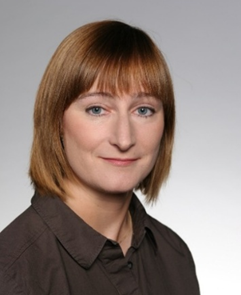Packaging Technologies for Innovative Medical Devices
-- PCBs, test vehicles, stress failures, mechanisms, electromigration, case studies ...
See LOCATION tab for WebEx info
There is increasing need for electronic medical devices covering a variety of applications ranging from wearable monitoring devices to smart catheters and bioelectronic medicines. Recently – especially developments in the areas of smart wound monitoring, theranostics devices and implantable brain-computer interfaces have gained momentum. Although the specific requirements for these applications are fundamentally different, all of them are and will be enabled by innovative flexible hybrid electronics solutions. Miniaturization and the use of new materials will allow im-proved functionality in thinner and smaller form factors for both medical-grade and consumer-grade-based health monitors, as well as implantable and other medical devices. Current technology developments include printed electronics as well as high density thin film technologies and even combinations of these technologies. The use of ultrathin bare dies on or embedded in flexible and stretchable substrates allows unobtrusive wearable devices as well as miniaturized soft flexible implants. The heterogeneous integration of MEMS components, sensors RF interfaces, optical components and different approaches to wireless power supply will be key for the next generation of medical microsystems adapted to the human body. Medical applications have been a major driving force for the development of new substrate technologies- e.g. TPU, LCP or F2R together with adapted assembly processes. The presentations of this webinar will describe new approaches to electronic medical devices, materials, patterning and integration processes as well as the assessment of reliability challenges. Thus, they will provide an overview over the current status as well as foreseeable trends and challenges.
Date and Time
Location
Hosts
Registration
-
 Add Event to Calendar
Add Event to Calendar
- Contact Event Host
- Co-sponsored by Benson Chan
Speakers
Christine Kallmayer of Fraunhofer IZM
Packaging Technologies for Innovative Medical Devices
There is increasing need for electronic medical devices covering a variety of applications ranging from wearable monitoring devices to smart catheters and bioelectronic medicines. Recently – especially developments in the areas of smart wound monitoring, theranostics devices and implantable brain-computer interfaces have gained momentum. Although the specific requirements for these applications are fundamentally different, all of them are and will be enabled by innovative flexible hybrid electronics solutions. Miniaturization and the use of new materials will allow im-proved functionality in thinner and smaller form factors for both medical-grade and consumer-grade-based health monitors, as well as implantable and other medical devices. Current technology developments include printed electronics as well as high density thin film technologies and even combinations of these technologies. The use of ultrathin bare dies on or embedded in flexible and stretchable substrates allows unobtrusive wearable devices as well as miniaturized soft flexible implants. The heterogeneous integration of MEMS components, sensors RF interfaces, optical components and different approaches to wireless power supply will be key for the next generation of medical microsystems adapted to the human body. Medical applications have been a major driving force for the development of new substrate technologies- e.g. TPU, LCP or F2R together with adapted assembly processes. The presentations of this webinar will describe new approaches to electronic medical devices, materials, patterning and integration processes as well as the assessment of reliability challenges. Thus, they will provide an overview over the current status as well as foreseeable trends and challenges.
Biography:

Address:United States
Agenda
See LOCATION tab for WebEx info
